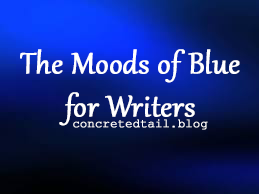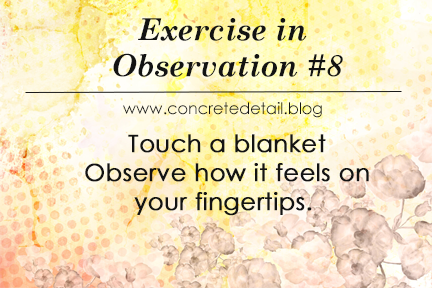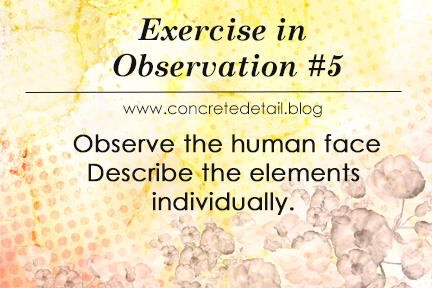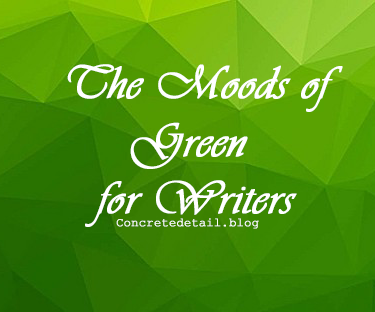#write #writer #writing #amwriting #amwriter #writingprompt #writeNOW #writingforwriters #ErikaHayesAuthor #ConcreteDetail.blog
 Blue is a color that has a calming effect and affects people mentally versus the physical reaction that people have to red or orange. It is a color that most people cite as their favorite color. Blue also has a darker side, it gives off feelings of loneliness, unfriendliness and be seen as unemotional. It represents large expansiveness as well. It can even slow human metabolism.
Blue is a color that has a calming effect and affects people mentally versus the physical reaction that people have to red or orange. It is a color that most people cite as their favorite color. Blue also has a darker side, it gives off feelings of loneliness, unfriendliness and be seen as unemotional. It represents large expansiveness as well. It can even slow human metabolism.
Psychology says:
People that choose blue as a favorite color are reliable, sensitive and usually make an effort to think of others. Blue lovers also often like things to be clean and tidy and feel that stability is a very important aspect of their life. Strong blues stimulate clarity. Softer blues with encourage concentration and allow the mind to rest.
Using Blue as a Writer:
- Blue in setting can be very calming. Great when trying to slow the tension in your story
- When your character is feeling reflective
- Blue is associated with authority. A writer can use blue in descriptions of clothing to show which characters are in charge
- Blue is also associated with intellectualism. Using a sense of blue in a character setting can allow your reader to draw the conclusion that your character is wise.
- Using blue when describing rituals or warding off of spirits
- Blue can be used in wedding traditions
- When a character is feeling confident
- Uses blue to dampen spirits and to give a sad motif to your writing
Dress your Character in Blue When:
- Your character needs to display a sense of calm
- When your character is seeking to communicate (Think a cop questioning a perp)
- When they are comfortable
- To set a mood of security
- To underscore a sense of dependability
Other Names for Blue:
slate, cobalt, teal, ocean, Aegean, berry, spruce indigo sky, navy, midnight, peacock, denim, admiral, sapphire, artic, azure, cerulean, Lapis, Azul, Prussian, royal, Oxford, cornflower, Carolina, baby blue, Tiffany Blue, steel, stone, pigeon, slate
Emotions of Blue
Positive: Intelligence, honesty, trust, serenity, authority, efficiency, duty, coolness, reflection, safety, confidence, calmness, dependable, importance
Negative: Coldness, a sense of aloofness, a lack of emotion, unfriendliness, depression, sadness, laziness, melancholy, self-centeredness, self-righteousness
Cultural Notes:
Blue is considered the safest color choice around the world, it has many positive associations. In North America and Europe blue represents trust, security, and authority. Blue is soothing and peaceful. It can also represent depression, loneliness, and sadness (hence a common saying when feeling down, “having the blues”). The color blue often has strong religious significance for peace, and in many cultures, it is believed to ward off evil spirits. In Iran, blue is used when mourning but in the West, it is often used in weddings and may represent love. (Something old, something new, something borrowed, something blue.)
Gems/Stones:
Stones that are blue often are associated with calming or relaxation. They can be used in chaotic situations to bring order and allow communication. Blue stones often inspire and give courage to those that possess it.


 As a visual artist, I found that creating mood boards were a wildly successful way for me to remain focused on my work. I have literally hundreds of them stored on my Pinterest account and other places that I used during my years in the Paper Art industry. It is that success that led me to create mood boards for my writing.
As a visual artist, I found that creating mood boards were a wildly successful way for me to remain focused on my work. I have literally hundreds of them stored on my Pinterest account and other places that I used during my years in the Paper Art industry. It is that success that led me to create mood boards for my writing.



 Friday is my lemonade day. See I have this little commitment I made several months ago which begins tomorrow. I leave for camp with a rag-tag group of elementary aged kids. They needed a human to drive them and tend to their many needs for several days and I am that human. I love going to camp, in fact, this is my second trip this year with kiddos to enjoy the great out of doors. Here is my lemonade. All week, we have talked about confessions of a bad writer, how to be consistent and motivated and that our time writing is valuable and here I am, forking over all this time (120 of my 168) for the week and basically eliminating my writing time. Truly lemons. A bit sour because I am fired up to write, but will be moving all week at a rapid pace with these precious kids. (Another lemon would be the ungodly hour they want me to get up every morning, see I am a night owl and anything before 8:00 am is a real struggle.)
Friday is my lemonade day. See I have this little commitment I made several months ago which begins tomorrow. I leave for camp with a rag-tag group of elementary aged kids. They needed a human to drive them and tend to their many needs for several days and I am that human. I love going to camp, in fact, this is my second trip this year with kiddos to enjoy the great out of doors. Here is my lemonade. All week, we have talked about confessions of a bad writer, how to be consistent and motivated and that our time writing is valuable and here I am, forking over all this time (120 of my 168) for the week and basically eliminating my writing time. Truly lemons. A bit sour because I am fired up to write, but will be moving all week at a rapid pace with these precious kids. (Another lemon would be the ungodly hour they want me to get up every morning, see I am a night owl and anything before 8:00 am is a real struggle.) Now we are several days into our rededication to our craft, by our I mostly mean, me. Let’s look at our schedule.
Now we are several days into our rededication to our craft, by our I mostly mean, me. Let’s look at our schedule. Blue is a color that has a calming effect and affects people mentally versus the physical reaction that people have to red or orange. It is a color that most people cite as their favorite color. Blue also has a darker side, it gives off feelings of loneliness, unfriendliness and be seen as unemotional. It represents large expansiveness as well. It can even slow human metabolism.
Blue is a color that has a calming effect and affects people mentally versus the physical reaction that people have to red or orange. It is a color that most people cite as their favorite color. Blue also has a darker side, it gives off feelings of loneliness, unfriendliness and be seen as unemotional. It represents large expansiveness as well. It can even slow human metabolism.